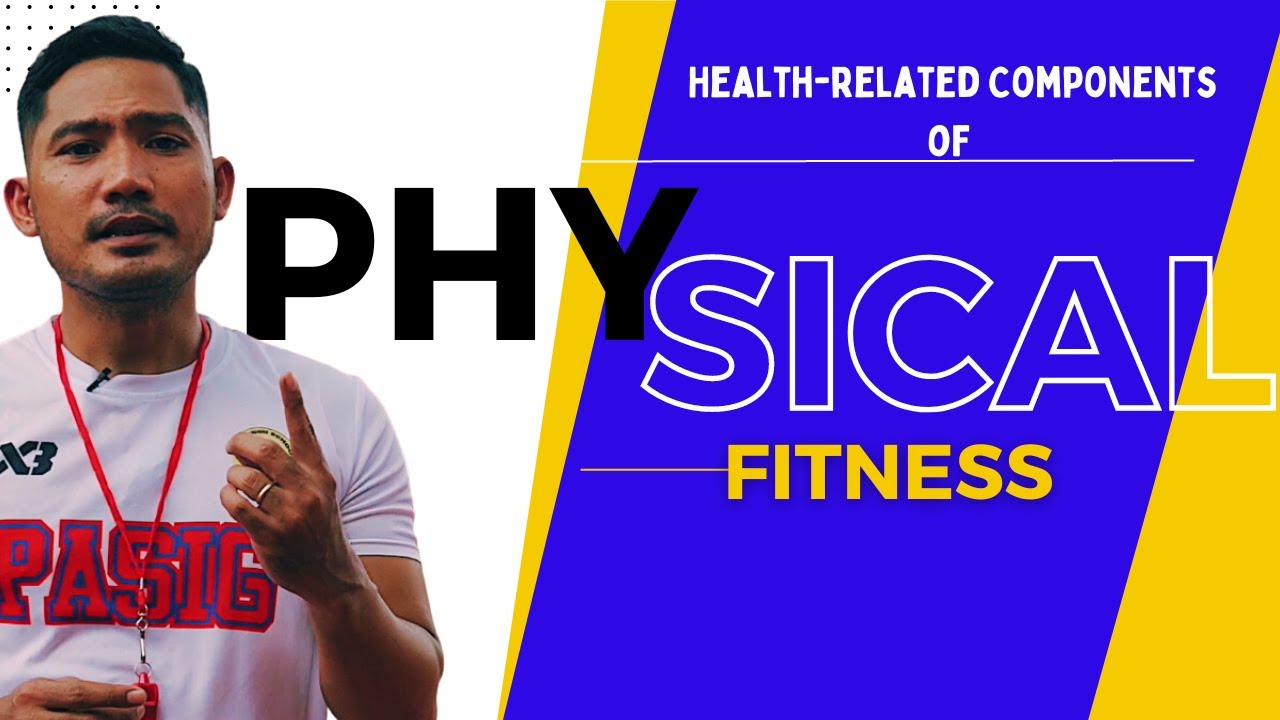The 5 Components of Health Related Physical Fitness | A Summary Overview |
Summary
TLDRThis video covers the five components of health-related fitness: cardiovascular endurance, muscular strength, muscular endurance, flexibility, and body composition. Cardiovascular endurance refers to the heart and lungs' ability to supply oxygen during activities like running or swimming. Muscular strength is about how much force muscles can exert in one effort, while muscular endurance refers to performing repeated movements. Flexibility involves joint movement and stretching to prevent injuries, and body composition refers to the balance of fat, muscle, and lean tissue in the body. The video highlights testing methods and ways to improve fitness in each area.
Takeaways
- 🏃 Cardiovascular Endurance: The ability of your heart and lungs to supply oxygen to your muscles during prolonged physical activity.
- 💪 Muscular Strength: The maximum force your muscles can exert in a single effort, such as lifting a heavy weight.
- 🔁 Muscular Endurance: The ability to perform repeated movements over time without fatigue, like doing multiple push-ups.
- 🧘 Flexibility: The range of motion in your joints, which helps reduce injuries and improves athletic performance.
- 🍽 Body Composition: The ratio of fat, muscle, and lean tissue in your body, influenced by diet, exercise, and sleep.
- 🏋️♂️ Strength vs. Endurance: Muscular strength is about how much force you can exert once, while muscular endurance is about how many times you can repeat an action.
- 🏊♀️ Aerobic Activities: Activities like running, swimming, and jumping rope help improve cardiovascular endurance.
- 📏 Sit and Reach Test: A common test used to measure flexibility in the lower back and legs.
- 🥗 Healthy Lifestyle: Eating well, exercising, and getting enough sleep contribute to better body composition.
- 📈 Setting Goals: It's important to set goals for each component of fitness and take actions to achieve them.
Q & A
What are the five components of health-related fitness?
-The five components of health-related fitness are cardiovascular endurance, muscular strength, muscular endurance, flexibility, and body composition.
What is cardiovascular endurance?
-Cardiovascular endurance is the ability of the heart and lungs to supply oxygen to the body during sustained physical activity. It is often improved through activities like running, swimming, and jumping rope.
How does cardiovascular endurance help in physical activities?
-Cardiovascular endurance allows your heart and lungs to work efficiently, providing oxygen to your muscles during aerobic activities. This helps you maintain activity for longer periods without getting easily tired.
What is the difference between muscular strength and muscular endurance?
-Muscular strength refers to the maximum amount of force your muscles can exert in a single effort, such as lifting heavy weights once. Muscular endurance refers to the ability of your muscles to perform repeated actions over time, such as doing multiple push-ups.
Can someone have both muscular strength and muscular endurance?
-Yes, muscular strength and muscular endurance are related. Someone who is strong often has good muscular endurance, and vice versa, although they focus on different aspects of muscle performance.
What is flexibility, and why is it important?
-Flexibility is the ability of your joints to move through their full range of motion. It is important because it helps reduce the risk of injury and improves overall mobility, making it easier to perform physical activities.
How can flexibility be improved?
-Flexibility can be improved through activities like stretching, yoga, and gymnastics, which involve controlled movements that increase the range of motion in your joints.
What is body composition?
-Body composition refers to the proportion of fat, muscle, and lean tissue in your body. It is commonly measured using height and weight, though other methods may provide more accurate results.
What factors can influence body composition?
-Body composition is influenced by several factors, including diet, exercise, and sleep. Proper nutrition, regular physical activity, and adequate rest all play important roles in maintaining a healthy body composition.
How can improving flexibility help prevent injuries?
-Improving flexibility allows your muscles and joints to move more freely, which reduces strain and the likelihood of injury. Stretching before physical activities helps prepare the body and prevents muscle stiffness.
Outlines

Esta sección está disponible solo para usuarios con suscripción. Por favor, mejora tu plan para acceder a esta parte.
Mejorar ahoraMindmap

Esta sección está disponible solo para usuarios con suscripción. Por favor, mejora tu plan para acceder a esta parte.
Mejorar ahoraKeywords

Esta sección está disponible solo para usuarios con suscripción. Por favor, mejora tu plan para acceder a esta parte.
Mejorar ahoraHighlights

Esta sección está disponible solo para usuarios con suscripción. Por favor, mejora tu plan para acceder a esta parte.
Mejorar ahoraTranscripts

Esta sección está disponible solo para usuarios con suscripción. Por favor, mejora tu plan para acceder a esta parte.
Mejorar ahora5.0 / 5 (0 votes)






